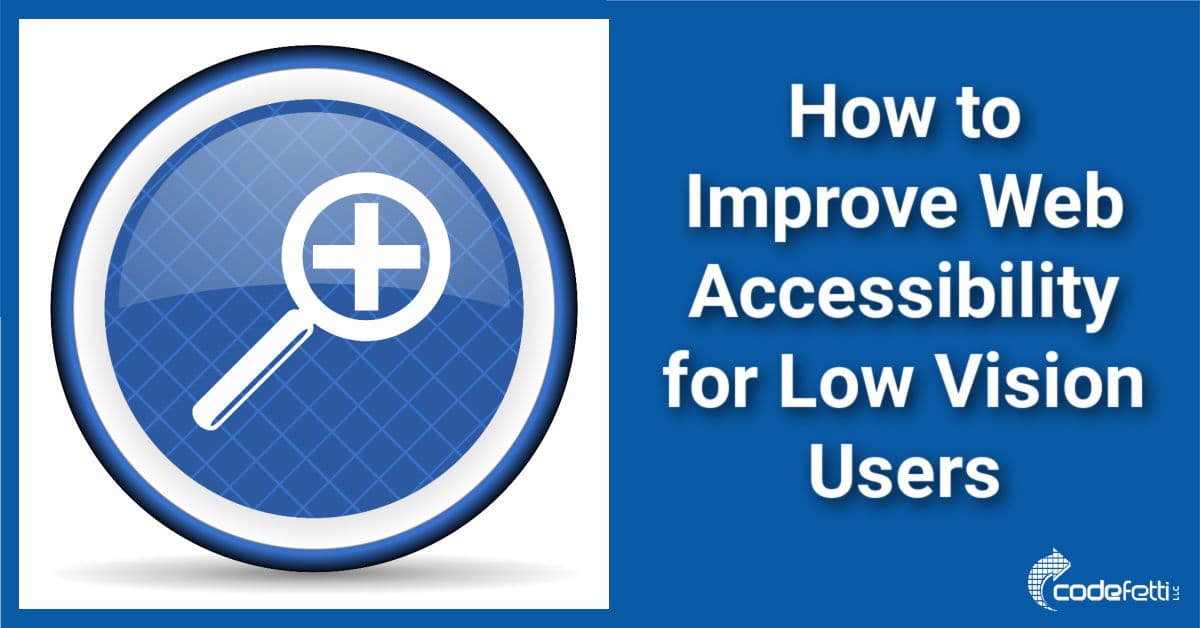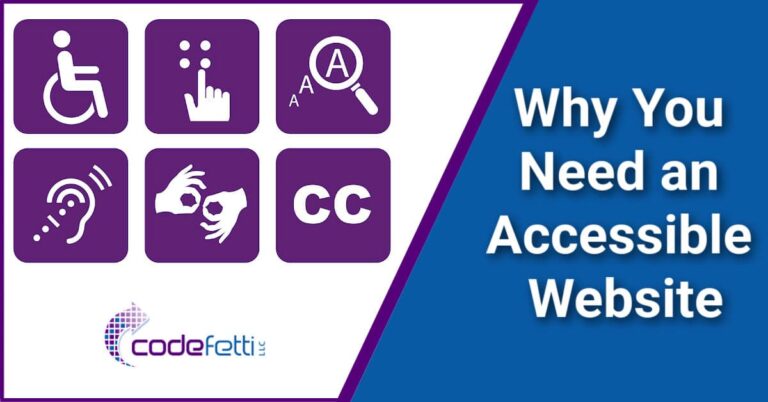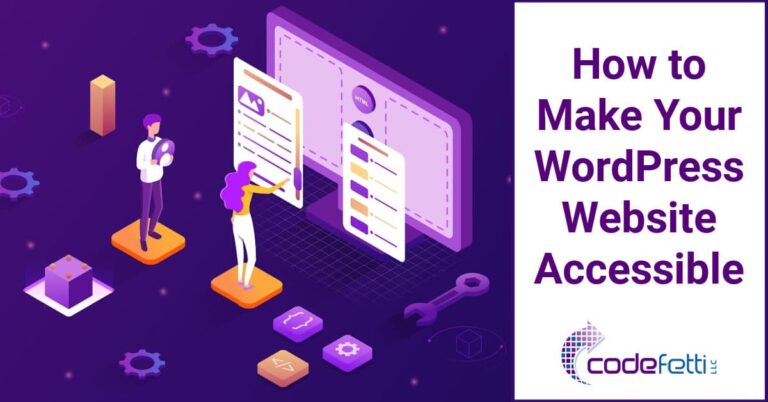How to Improve Web Accessibility for Low Vision Users

This post explores how to improve web accessibility for low vision users.
As a result of the challenges faced by the low vision demographic, the World Wide Web Consortium (W3C) has assembled a document describing accessibility requirements for people with low vision.
This document describes what low vision is, and what low vision users need to access electronic content.
When I started learning about website accessibility, I only considered those who were blind.
I did a lot of research on why you need an accessible website.
And then I put together a guide to show how to make your WordPress website accessible.
Though I took great care to fix as many website accessibility issues as I could for blind users, I realized that I had additional work to do in order to improve web accessibility for low vision users.
What is Low Vision?
Low vision users are not just legally blind people.
They may struggle with blurred vision, generalized haze, or light sensitivity.
Or perhaps they have partial vision loss where they have a blind spot or loss of peripheral vision.
And others struggle with color or night blindness.
They may be people who experience vision decline as a result of aging.
Many times low vision users have multiple vision issues that further complicate how they can access the internet.
So these users rely on assistive technologies to help them navigate the internet.
Understanding Low Vision Challenges
When I started learning about website accessibility, it became a personal goal to better understand the challenges faced by visually impaired website visitors.
That’s why I am so grateful that I connected with Jennifer Quisenberry, founder of Champagne and Coconuts.
Jennifer and I have had some serious discussions about her personal challenges using the internet.
And she has honestly described her experience as a low vision user navigating the web.
Then she graciously shared ideas on how we as website owners can help improve website accessibility for low vision users.
Vision Changes from Day to Day
Low vision users don’t always use screen readers, so their challenges are different than what blind users face.
And low vision users don’t always rely on ALT text.
That’s because low vision users can see.
But things look blurry and some days vision may be better than other days.
On those days, eyeglasses can help as well as magnifying font sizes.
And often, low vision users need to make adjustments at the device level.
For Jennifer, that means using a desktop since it’s easier to see.
So she’ll adjust contrast and font size at the monitor level.
Jennifer hasn’t found plugins such as Userway or Accessibe that some sites use as helpful for her particular situation.
But she has used the magnifier, link highlighter, and readable font features of these plugins from time to time.
Beyond that, she has an accessibility “wish list” that she wants to share with site owners and web designers.
And I’m happy to share that list next.
Accessibility Wish List
But first, you’ll definitely want to go through the guide on how to make your WordPress website accessible.
Many of the issues faced by low vision users are covered in that post as well.
Then consider the additional recommendations below.
How to Improve Web Accessibility for Low Vision Users
Improve Your Web Design and SEO too!
Many of these web accessibility tips apply to not only good web design, but also to your SEO.
For example, having a well structured site is just a part of a good SEO strategy. That means a Table of Contents, if needed, and proper headings throughout.
My takeaway after meeting with Jennifer resulted in additional modifications to my website.
And I discuss those changes next.
Is a Sidebar Really Necessary?
A sidebar might make sense to websites that do a lot of selling.
Those website owners likely have ads running on their site or affiliate links.
But many sites I see just have a search icon, list of recent posts, and social follows in the sidebar.
This is where I think you really need to consider ditching the sidebar and opening up your content width for ease of reading.
On my own site, I did just that.
I considered deleting the sidebar for quite some time, and improving my site accessibility was the perfect opportunity to do so.
Adding Video Transcripts
If you upload videos to YouTube, a transcript is automatically generated.
Once done with editing, you can copy that transcript and then add it under each video on your website.
Let your visitor know that you have a transcript available so they are sure to look for it.
Add Print Option
You can provide a link to Print Friendly so visitors can install the Print Friendly application in their browser. They will then be able to print your content from the browser and read it more easily.
Additional Reading
February is Low Vision Awareness month.
Check out this in-depth article by Equalize Digital to learn more about low vision challenges, conditions, and assistive technologies used by people with low vision or visual impairments.
Wrapping Up
So you see it doesn’t take a whole lot of effort to clean up your site and make it as user friendly as possible to your visitors.
Your efforts will result in a better structured, more well-designed site that can be enjoyed by people of all abilities.
And as an added bonus, you’ll improve your SEO, too!
I want to extend a special thank you to Jennifer Quisenberry of Champagne and Coconuts for her invaluable contribution to this post.
Hopefully this post has been helpful in showing you how to improve web accessibility for low vision users.
I welcome any comments or tips you may have discovered along your path to web accessibility!



